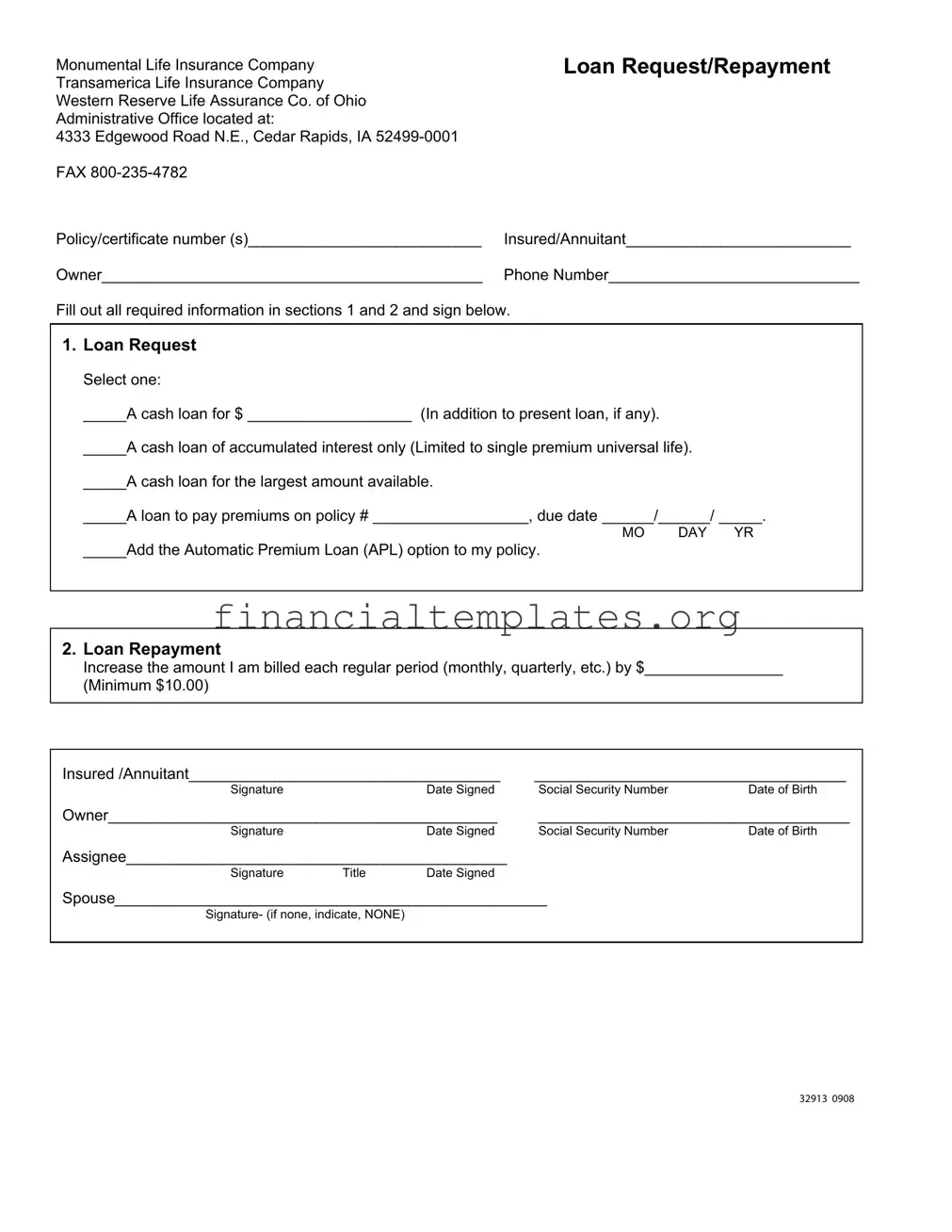The Personal Loan Agreement Form is quite similar to the Loan Request Repayment form described. Both documents are used to outline the terms of a loan between two parties. In a Personal Loan Agreement Form, details include the loan amount, interest rate, repayment schedule, and any collateral. This mirrors the Loan Request Repayment form's focus on the loan amount, repayment method, and specifics regarding the use of the loan, such as for premium payments or as a cash loan.
An Installment Agreement is another document that shares similarities with the Loan Request Repayment form. This type of agreement lays out a plan for repaying a debt in regular installments over a specified period. The similarity comes into play with the Loan Repayment section of the form, which specifies how repayment will be increased per billing period. Both documents effectively manage and schedule debt repayment to ensure clarity for all parties involved.
The Debt Settlement Agreement can also be compared to the Loan Request Repayment form. This agreement is a negotiation between the debtor and creditor that allows for the repayment of a debt under new terms. This might include a reduction in the overall amount owed or an extension of the repayment period. The Loan Request Repayment form, especially its Loan Repayment section, reflects a negotiated approach to managing an existing loan, focusing on adjusting repayment terms.
Mortgage Refinance Documents share a purpose with the Loan Request Repayment form specifically in the context of adjusting the terms of an existing loan. Refinancing a mortgage involves taking out a new loan to pay off an existing mortgage, often to benefit from a lower interest rate or different loan term. This is akin to the Loan Request Repayment form’s option to apply for a new loan to pay premiums or modify repayment schedules, highlighting a re-negotiation of terms.
A Credit Card Payment Agreement Form is relevantly similar as well. This form usually specifies how a borrower will pay off the outstanding balance on a credit card, potentially including interest rates and payment deadlines. Similar to the Loan Repayment section of the Loan Request Repayment form, it formalizes the commitment to pay under specified terms, with clear implications for interest management and repayment period.
The Line of Credit Agreement is another document related to the Loan Request Repayment form. It establishes terms under which a borrower can withdraw funds up to a certain limit at their discretion. This agreement controls how and when the borrowed funds need to be repaid, akin to the flexibility seen in the Loan Request section of the Loan Request Repayment form, where different loan options are presented.
A Payment Plan Agreement, used to break down a large payment into smaller, manageable installments, aligns closely with the repayment aspect of the Loan Request Repayment form. It outlines how debt will be repaid over time, including any interest or fees, very much like how the repayment section of the form structures the increase in billed amount over regular periods, making large sums more manageable.
Lastly, Auto Loan Documents, which include details such as the loan amount, interest rate, repayment schedule, and information about the vehicle serving as collateral, have parallels with the Loan Request Repayment form. Both set out terms for repaying borrowed money, though the context and specifics may vary, the foundational concept of structuring the repayment of a loan connects them closely.

